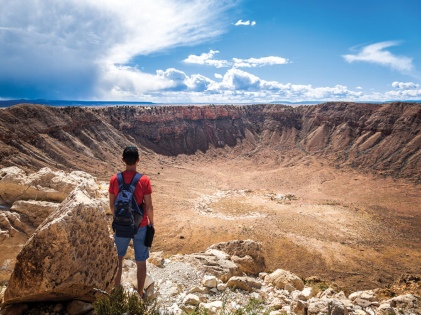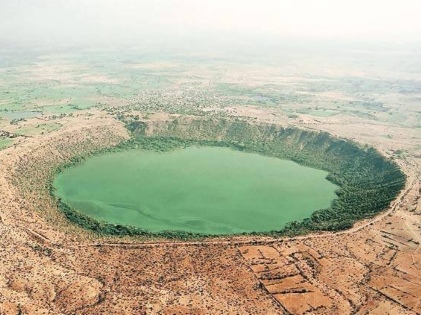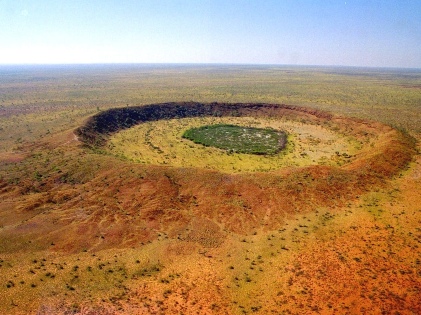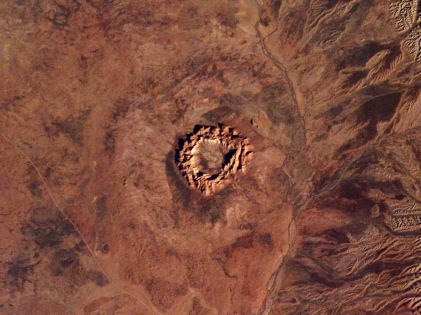Planet Earth is all about mysteries. Debris from outer space hit the planet time and again. However, humans are lucky enough that most of the debris burns up before entering the Earth’s atmosphere. The result is the transient meteor showers that light up the night sky. It’s also home to some of the natural tourist destinations, which are the strongest. It’s a treat to watch.
However, on certain occasions, a big object like a meteoroid manages to enter the atmosphere. It collides with the surface of the Earth, thus resulting in the formation of impact craters at the place where it hits. These impact craters are holes that are more or less circular. According to the PASSC or the Planetary and Space Science Center, 190 impact craters are on the Earth’s surface. Here is a list of the biggest impact craters you must see.
Barringer Crater
 Located in Arizona, United States, the Barringer Crater’s diameter is 0.8 miles, i.e., 1300 meters. It’s 570 feet deep and is 50,000 years old. It formed when a large iron meteor hit the Colorado Plateau in northern Arizona.
Located in Arizona, United States, the Barringer Crater’s diameter is 0.8 miles, i.e., 1300 meters. It’s 570 feet deep and is 50,000 years old. It formed when a large iron meteor hit the Colorado Plateau in northern Arizona.
The meteor, weighing around 300,000 tons, traveling at 12 kilometers per second, reveals the Barrington Crater Company. The force of the explosion was similar to two and a half million tons of TNT.
After the impact, some 175 million tons of rock were excavated from the site. The Lunar and Planetary Institute has furnished this data. Daniel Moreau, the mining engineer who identified the crater’s origins, was sure of the impact of a meteor on the surface of Earth. Though several scientists did not support this view at that time, Barringer investigated the crater and devoted several years to finding proof of the origin. The scientific community later accepted Barringer’s theory. The Barringer Crater Company owns this crater. It’s a private enterprise that looks after the preservation of the Barringer Crater.
Lonar Crater
 Lonar Crater is in the Deccan Plateau in Southern India. The crater discovery dates back to 1823. Since then, it has baffled the scientists who have tried to reach its origin. As per the data from the NASA Earth Observatory, C.J.E. Alexander, a British officer, first noticed it. Lonar Crater is of great significance in Hindu mythology. This place where Lonasura, the demon-giant, was slain by Lord Vishnu. You will find different temples along the edge of the crater.
Lonar Crater is in the Deccan Plateau in Southern India. The crater discovery dates back to 1823. Since then, it has baffled the scientists who have tried to reach its origin. As per the data from the NASA Earth Observatory, C.J.E. Alexander, a British officer, first noticed it. Lonar Crater is of great significance in Hindu mythology. This place where Lonasura, the demon-giant, was slain by Lord Vishnu. You will find different temples along the edge of the crater.
Hindu mythology further states that the lake resulted from the blood that spilled from Lonasura’s body. The people in India attach huge cultural importance to this place. The diameter of the Lonar Crater is 6000 feet, i.e., 1830 meters. It’s 500 feet deep and is around 35,000 to 50,000 years old. According to the British Library, the only impact crater to have formed in basalt is the Lonar Crater. The place is popular for the unique ecosystem around it. Much to the surprise of the locals and the scientists who visited the place in June 2020, the lake turned rosy pink in color.
Wolfe Creek Crater

Wolfe Creek Crater is another Australian crater that attracts tourists. It lies on the edge of the Great Sandy Desert in the northern part of Western Australia. With a diameter of 880 meters, the Wolfe Creek Crater is 196 feet deep and is 120,000 to 300,000 years old. The crater is one of the world’s second-largest ones from which scientists have unearthed a meteorite’s fragments.
May to October is the perfect time to visit the Wolfe Creek Crater. There are plenty of cultural stories associated with the place. The Australian Parks and Wildlife Service states that the Wolfe Creek Crater was first observed in 1947 when an aerial survey of the region.
Gosses Bluff
 You will find a host of impressive craters in Australia, and one of them is the Gosses Bluff. This crater is in Australia’s Northern Territory. Originally 13.6 miles, the Gosses Bluff is now 2.7 miles in diameter.
You will find a host of impressive craters in Australia, and one of them is the Gosses Bluff. This crater is in Australia’s Northern Territory. Originally 13.6 miles, the Gosses Bluff is now 2.7 miles in diameter.
It is one of Australia’s most heavily researched impact craters. It holds a lot of science and cultural importance, therefore being on the must-see list when people visit the country.
The Gosses Bluff is a revered site to the Western Arrernte Aborigines. It is between the James Range and the Macdonnell Ranges. It hit the earth some 142 million years back, as disclosed by scientists. You can visit other craters are the Pingualuit Crater, the Kaali Crater Field, and the Nordlinger Ries.





